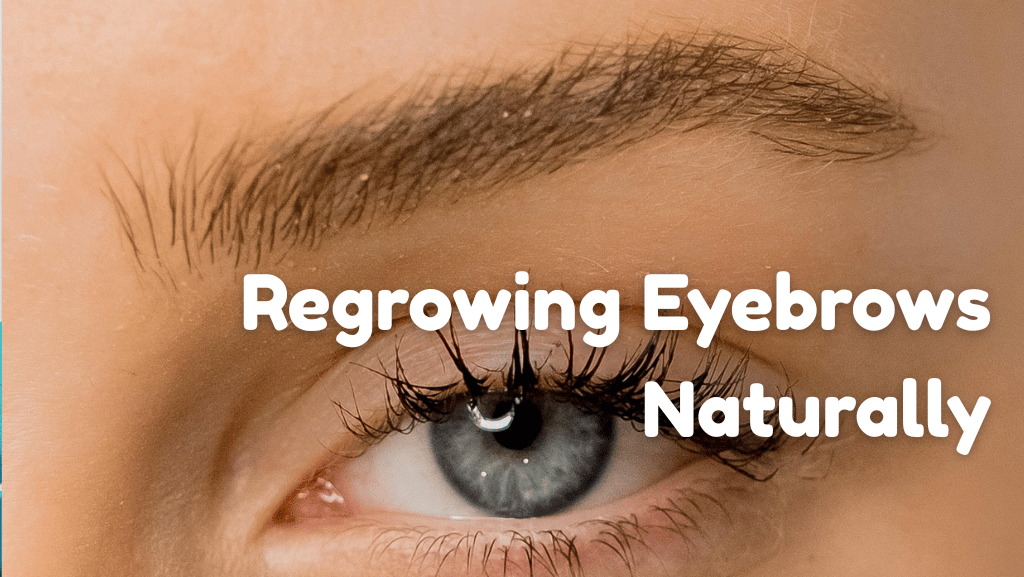Growing out eyebrows naturally can be a frustrating process for anyone who’s overplucked or wants fuller brows. The best way to start is by leaving the tweezers alone for a few weeks, supporting your brows with gentle care, and considering products designed to promote natural hair growth. Many find it helpful to use nourishing oils and avoid harsh grooming techniques while letting the hair regrow in its natural pattern.
This kind of routine can take time, which is why some turn to additional support during the process. One option is to buy eyebrow growth serum online, especially from sources that focus on ingredients known to support hair strength. While results vary, adding a serum can become part of a consistent care approach. It’s often used alongside other habits like regular brushing and limiting product buildup.
Key Takeaways
- Start by letting your brows grow untouched.
- Use supportive products like natural oils or eyebrow serums.
- Patience and consistent care give the best natural results.
Key Steps to Naturally Grow Out Your Eyebrows
Consistent care and the right products can support eyebrow regrowth, but genetics play a major role in the thickness and shape of brows. Healthy lifestyle choices and patience are essential for achieving fuller, more natural eyebrows.
Avoid Over-Tweezing and Waxing
Stopping tweezing, waxing, or threading is critical for natural eyebrow growth. Frequent removal disrupts the hair growth cycle and can even cause permanent loss over time. Experts recommend putting down the tweezers for at least two months to allow follicles to recover.
During this period, resist shaping or plucking stray hairs. Temporary untidiness is normal and signals that new growth is beginning. A gentle touch during cleansing, and avoiding aggressive rubbing or exfoliation near the brow area, helps prevent unnecessary breakage and supports healthier follicles. When maintenance is needed, use tweezers only to remove obvious hairs far from the brow line, and avoid shaping until more substantial growth is visible. Taking a hands-off approach gives the best chance for fullness to return.
Incorporate Nourishing Ingredients and Products
Supplying eyebrows with nutrients and hydration supports regeneration. Ingredients like castor oil and rosemary oil have been linked to eyebrow growth. Castor oil is rich in fatty acids, which can help moisturize and condition brow hairs.
Application methods are simple—use a clean spoolie or cotton swab to apply a thin layer of oil or a commercial brow serum at night. Products marketed as eyebrow growth serums often contain peptides and botanical extracts, formulated to strengthen existing hairs and stimulate regrowth. Some research suggests rosemary oil may encourage growth rates similar to minoxidil. Eating a balanced diet with vitamins such as biotin, zinc, and iron supports healthy hair follicles. Hydration and regular gentle massage may also encourage blood flow to the brow area.
Patience and Embracing Your Natural Growth Cycle
Eyebrow hair grows in cycles of several weeks to months, meaning visible changes take time. Genetics influence how fast and thick eyebrows regrow, so results vary from person to person. Avoid comparing growth rates, as what’s normal for one individual may differ for another.
It can take months, or even up to a year, for some people to achieve their desired fullness—especially if brows were over-plucked for an extended period. Tracking progress with photos can help maintain motivation. Be realistic about expectations, since not all follicles will reactivate if they’ve been damaged. Focus on healthy habits and consistency in care, using supportive products and minimal grooming, to encourage your best possible natural brow growth.
Enhancing and Maintaining Brow Growth
Several strategies can improve the look of growing brows while supporting their natural development. Short-term grooming techniques, professional treatments, and a careful approach to topical products all play a role in achieving fuller, healthier eyebrows.
Using Brow Gel and Concealer for Fuller Brows
Brow gel is a useful styling product that adds immediate definition and fullness. Tinted gels can make sparse areas appear denser, while clear gels help hold hair in place. For best results, apply gel in short, upward strokes along the direction of hair growth.
Concealer is also helpful for shaping brows and masking patchy areas. Using a fine brush, apply a small amount of concealer directly beneath and above your brows. This sharpens edges and brightens the brow bone, creating a clean, polished look. Pairing brow gel and concealer can help bridge the gap while waiting for natural growth.
When to Consider Targeted Treatments and Services
Some people may not see the brow growth they want with home care alone. In cases of over-plucking, genetics, or slow regrowth, services such as professional brow tinting can create a fuller appearance instantly. Tinting temporarily darkens even the finest hairs, resulting in brows that look thicker for 2–3 weeks.
Other semi-permanent options include microblading or powder brows. These treatments use pigment to fill in sparse areas, and can last from several months to a few years. While generally safe, it’s important to choose experienced technicians and review potential risks before pursuing these services. Brow laminating is another professional service that temporarily lifts and smooths brow hairs for a fuller effect. This can help make unruly brows look thicker and better shaped for several weeks.
Conclusion
Starting to grow out eyebrows naturally benefits from a blend of patience and routine. Setting aside tweezers for several months helps encourage fuller regrowth.
Incorporating natural treatments like castor oil or rosemary oil can support new hair growth. Eating a balanced diet may also provide essential nutrients for stronger eyebrows. Tracking progress with photos and limiting grooming keeps the process on track. Staying realistic about results and giving brows time to fill in can make a notable difference for most people.




